- Home
- Our Programs
- Pregnancy and Postpartum
- How to Correct Diastasis Recti
|
||
| site search by freefind |
Learn How to Correct Diastasis Recti Naturally
I'll Teach You How to Correct Diastasis Recti - or at Least Greatly Improve It - with Corrective Exercises Anyone Can Do

Wondering how to correct diastasis recti? There are many natural options available. I have corrected my own diastasis recti with simple exercises that anyone can do. Before diving into that, let's be clear that we all are on the same page in terms of what diastasis recti is.
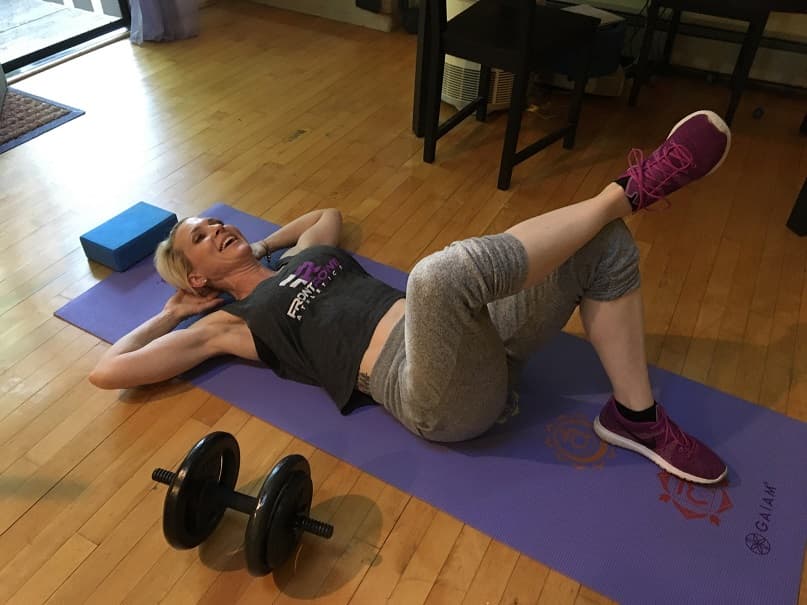 I have helped hundreds of women heal their diastasis recti without surgery.
I have helped hundreds of women heal their diastasis recti without surgery.The 2 sides of the abdominal wall connect in the middle on a line of fascia called the linea alba. Fascia is a thin casing of connective tissue that surrounds and holds every organ, blood vessel, bone, nerve fiber and muscle in place in our body.
This line appears between everyone's "six pack" muscles. It's normal to have some space between there. However, when the tissue in the midline thins out beyond a certain point it's known as diastasis recti. Pregnancy is the most common reason a person develops a diastasis, however athletes and even people who have never been pregnant can develop one. Both males and females can develop a diastasis recti.
The wrong types of exercises and even daily movement patterns can make a diastasis worse, which is why it's important to identify when one is present and take action.
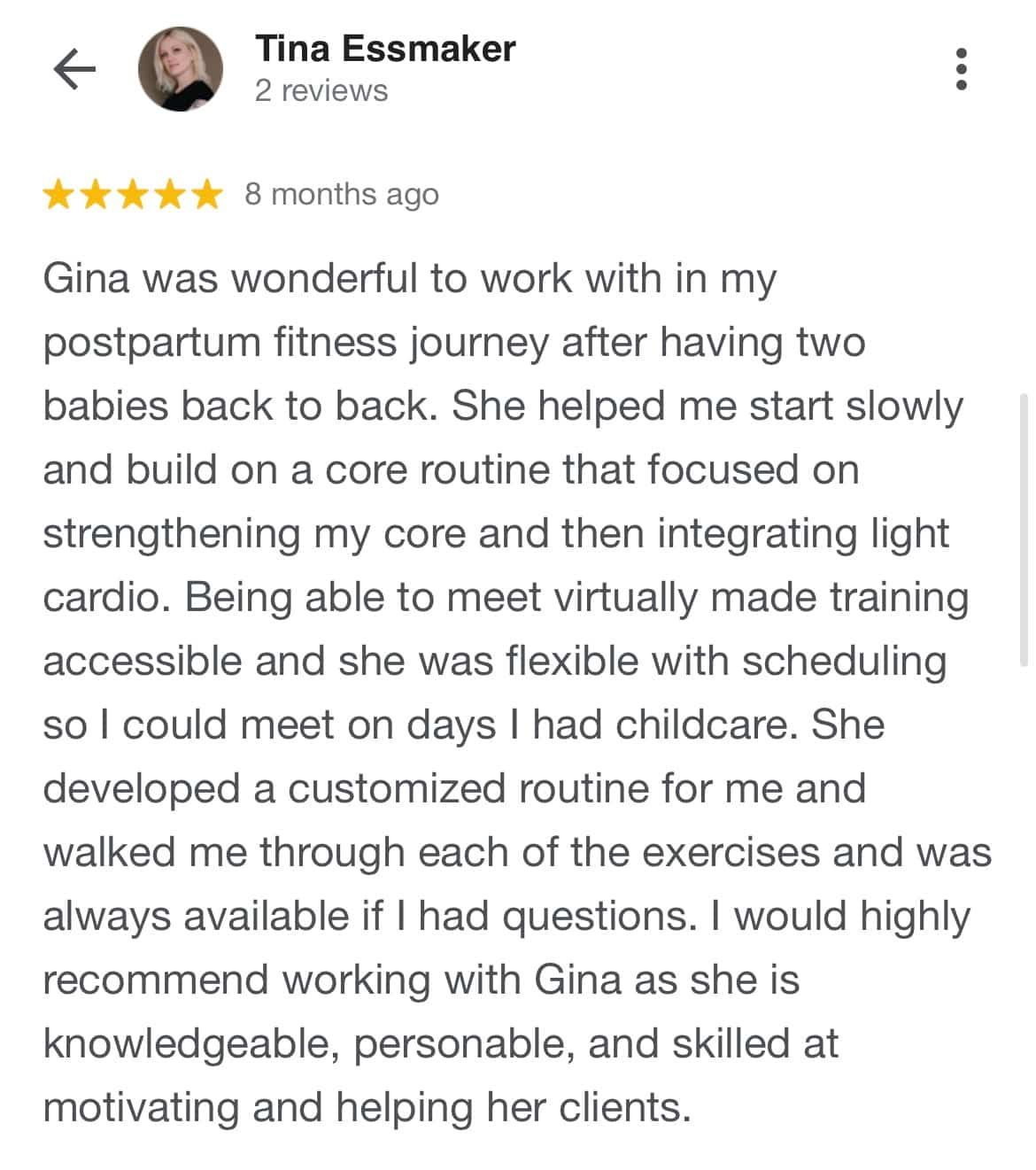
How to Measure a Diastasis
A diastasis is measured by checking the width and depth between the two sides of the "six back" muscle when barely lifting the head. Anything greater than 2 and a half finger widths is considered a diastasis. You may have one above, at or below the belly button - or even across all those spots. We also want the whole area to feel on the firm side in terms of muscle - almost like a trampoline versus something you can sink into. Bodyfat isn't what we are talking about - we are trying to assess the muscle tissue when making this evaluation. A Certified Pregnancy and Postpartum Corrective Exercise Specialist is able to help you determine if you have a diastasis if you are not sure. A doctor or PT will also be able to check for one. It's always going to be a bit of an estimate when using fingers. However, an ultrasound can be used to be sure on whether or not a diastasis is present.1
Everyone has a diastasis at their due date, and by some estimates 39% of women have one at six months postpartum.2 This means that we can't necessarily assume everyone will "bounce" back super quickly after giving birth! Furthermore, a diastasis can become more and more of a problem with each subsequent birth because the tissues will stretch faster the more times they have already been stretched out. I really wish learning how to correct diastasis recti was part of every woman's postpartum education - it's that important.
Want to find out if you have a diastasis recti? It's easy to self-test. Learn how from Trainer Jen!
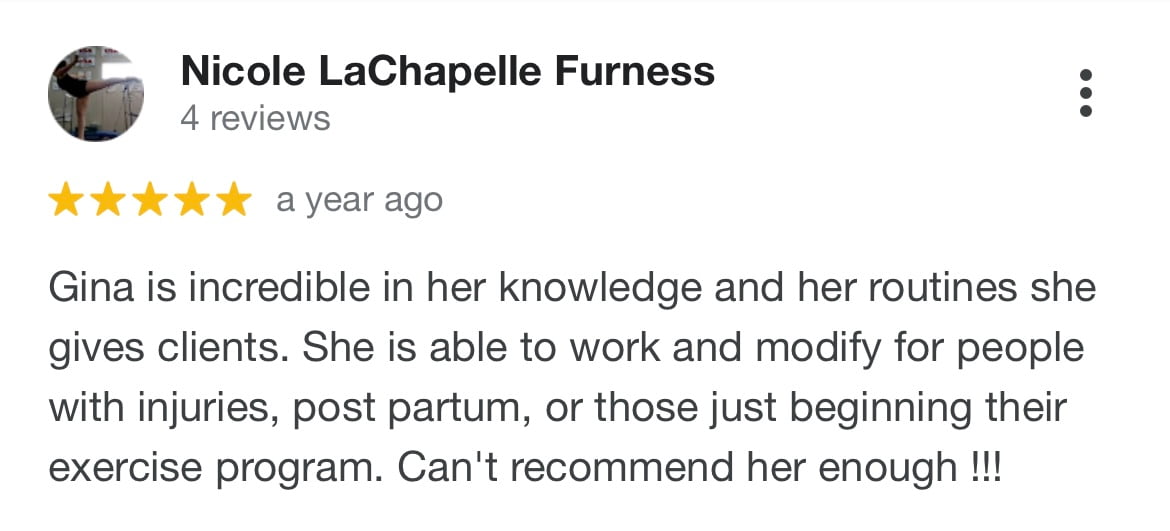
So often, if a women is "fine" after one child she is then shocked that by her second or third things are a lot different in her abs. For other women, the first pregnancy has already led to a diastasis that didn't resolve. Everyone is different, and it's all normal. The nice thing is, once you know how to correct diastasis recti, the same principles can be utilized to keep yourself safe if you decide to get pregnant again!
 Trainer Jen corrected her diastasis recti that was a result of her second pregnancy. She would love to help you fix yours, too!
Trainer Jen corrected her diastasis recti that was a result of her second pregnancy. She would love to help you fix yours, too!What's the Big Deal About Having a Diastasis?
A huge part of our core's job is to be able to handle pressure generated in our body when exercise, work or even just during daily activities. We generate pressure in our core in order to protect the spine. If pressure is generated poorly, it can result in maintaining or worsening a diastasis, or forming one where there was never one before. By learning how to improve pressure management, we can undo the damage completely in some cases, and largely in others. If you see a doming out of your midline during exertion, it's a telltale sign that you have a diastasis. Another common symptom is a poochy lower belly that sags and protrudes.
Can't I Just Get Surgery?
Technically, yes surgery is an option. The thing is, even if you choose to get surgery, if you haven't taught yourself how to better manage pressure in your core, the diastasis could very well return. And at that point, you will have more scar tissue to deal with. You also may become weaker in your abs while you wait for your surgery to heal - the exact opposite of what a diastasis needs, which is more core strength!
Rather than jump immediately to surgery, I would much rather see folks learn how to manage pressure in their core to set them up for success in either healing a diastasis or leading to the best post surgical outcome if surgery is chosen.
If you have pelvic floor symptoms too, such as leaking pee when you exert, cough or sneeze, that's another tip off that your entire core system could use a bit of work! And that's a great find - because if we know what part of our body needs work, we can get going on fixing it!
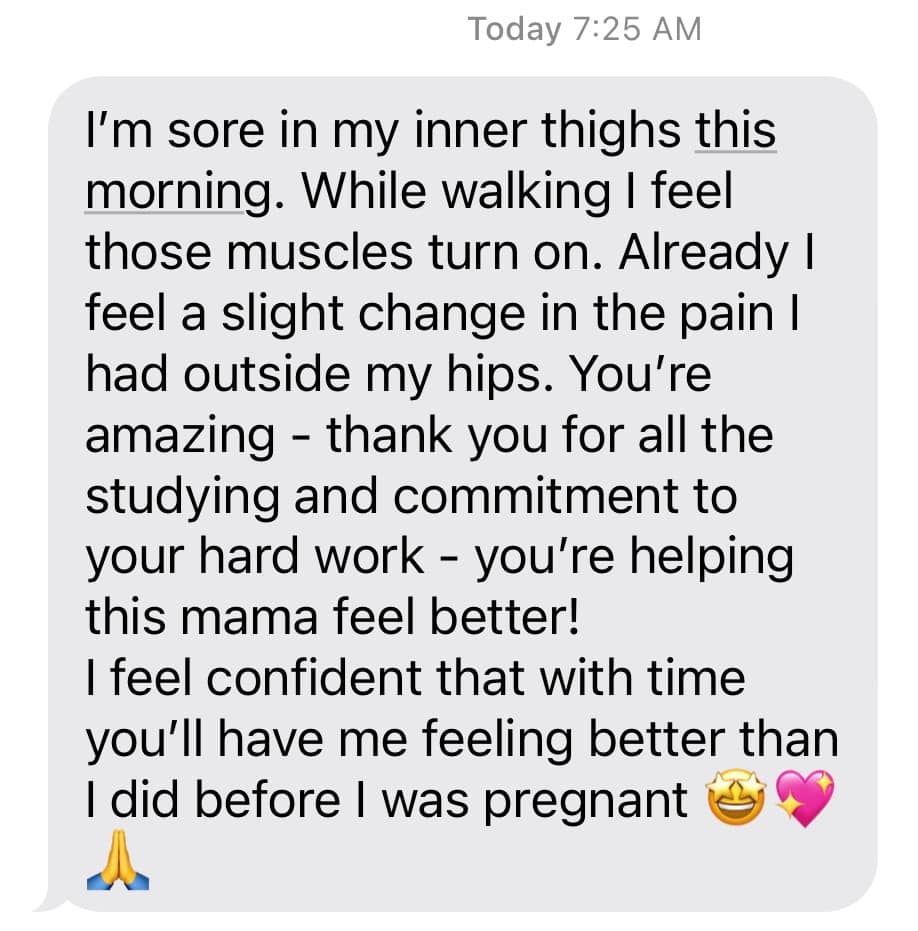
There are particular muscles that need to be called out and worked to learn how to correct diastasis recti, and that's where a trainer specializing in Pregnancy and Postpartum comes in.
- Folks with a diastasis have a deep inner core system that is not firing as nature intended.
- Contracting a special "corset" muscle deep in your abs called your transverse abdominis (TAs) before you perform an exercise can help create tension across your midline, meaning that you can then work your core as you so desperately need to be able to do to heal.
- Your pelvic floor works as a team with your TAs, so we want to make sure that it is up to snuff. It may be tighter or looser than we want for optimal functioning, and a corrective exercise specialist can help troubleshoot.
- Working on how you breathe can go a very long way toward healing a diastasis. When our breathing technique is off, it loads extra pressure on our diastasis, preventing the fascia from healing.
- Other muscles can affect how our core loads, so taking a look at how your serratus muscle works (the muscle just in front of and under your armpit) and how your glutes work can also have a huge impact.
Muscles need time to heal after getting stretched out due to pregnancy or the presence of a diastasis otherwise. Rushing back into all the exercises you did before is a recipe for keeping a diastasis or making it worse. Fascia can heal when we support it with the right environment, but the timing of when we challenge it versus let it rest matters.
Having a diastasis can also be emotionally distressing.
Who wants to feel like they have a hole in their abs or that their belly just doesn't look the same way anymore? Because our belly is something that others can see in most clothes, it's something that can affect our self confidence. The great news is that diastasis can be improved with some simple exercises that I will show you right now. Please be sure your doctor has cleared you for exercise before trying any of the moves to come.
How to Correct Diastasis Recti Step 1: Work on your 360 breathing.

This exercise will help improve the amount of pressure that is pushed out toward your diastasis both during exercise and also in everyday life.
How to Correct Diastasis Recti Step 2: Find your TAs, the "corset" muscles that are so critical.
You'd be surprised how many people's TAs have completely checked out! It's common for the bigger ab muscles to go ahead and do all the work after pregnancy or after a diastasis has formed...unless we specifically perform an exercise that forces them to come back on board.
How to Correct Diastasis Recti Step 3: Test how stable you're able to keep your core while you move your limbs.

If you feel any movement of your pelvis - even one millimeter - slow the move down or don't go as far! It's form over all else to get the results we want. This exercise will greatly improve the stability of your core - something everyone with a diastasis desperately needs.
How to Correct Diastasis Recti Step 4: If you're having trouble with any of the above exercises, you might need a bit of release work for tight muscles.

This move is great to do at the beginning of your corrective exercise workout to maximize results, especially if you are struggling with some of the above exercises.
FAQ
Is Diastasis Recti dangerous?
It can be, if it continues to get worse. It is also common for hernias to develop where a diastasis exists.
Which exercises are bad for a diastasis?
Any that cause your midline to dome (on harder exercises), or cause your muscles to sink in deep (usually on easier exercises). This list is different for everyone, but regular planks, push-ups and chin-ups are common culprits.
Is this a lifelong thing?
Not if we work on it :) Once you learn to better manage pressure in your core, you'll be able to bring back more and more of your favorite exercises into your routine. After learning how to correct diastasis recti with the specific moves you body needs, you'll be on your way.
Do I just have the do the exercises you show here?
Most likely you'll need to advance to the next level of challenge to heal your diastasis. However, since every body is different, I can't tell you which exercises you will need for complete healing without meeting with you. The ones shown on this page are a great start for everyone.
Can't I Just Work Out With an Abdominal Binder?
It can be a good idea when you've just had a baby to help support the abs, but after the first 6 weeks or so I don't love it, and here's why.
Disclosure: I only recommend products I would use myself and all opinions expressed here are our own. This post may contain affiliate links that at no additional cost to you, I may earn a small commission. Read full privacy policy here.
- Binding can create more pressure down on the pelvic floor, which can cause other issues such as prolapse. Bottom up support in the form of supportive shorts can be a safer bet if you must use some external support.
- Fascia needs some stress to heal. It's kind of like wearing an ankle brace for the rest of your life - then your ankle will never get stronger.
- You can always apply tape to your abdomen while trying to bridge the gap between wearing a binder to going with nothing. I also know many women who have healed their diastasis faster that average who swore by the tape. I like Rocktape best for this, although KT tape can also work, and I can teach you how to apply the tape for best results if you schedule a session with me. Order some KT tape here.
What are the Keys to Healing a Diastasis Once and For All?
- Build a more efficient and effective breathing pattern. Good breathing patterns also prime our nervous system to push out the optimal hormones to heal. The 360 breathing drill in the video above is a great start.
- Improve posture. Poor posture puts a ton of pressure out on a diastasis, preventing healing. Depending on how your posture looks, you can use different exercises to help.
- Perform exercises that provide full body support so the diastasis receives less pressure. Strong glutes and a strong pelvic floor matter! Since pelvic floors can either be strong or weak, it's important to figure out what's going on with yours. See my article on prolapse here for more info. You can also read about leaking here.
- It's not enough to have strong abs - they need to be balanced! A corrective exercise specialist can detect how your muscle balance is looking and what you can do to get into a better balance. Work out smarter, not harder!
- Whatever you do - stop drawing in your belly button in an attempt to support your diastasis. This is only going to make things worse as it interferes with the natural functioning of the abs. Ditch the tight clothing while you are working on healing a diastasis as it tends to trigger people to "suck in" both from the feedback of the fabric as well as aesthetics.
I have healed my own diastasis as well as 2 hernias with these corrective exercises, after a few surgeons told me that my only solution would be to get total abdominal wall reconstruction with mesh! I am confident my team can help you learn how to correct diastasis recti as well.
 Gina Paulhus has overcome diastasis recti as well as two large hernias.
Gina Paulhus has overcome diastasis recti as well as two large hernias.If you're interested in our services where you can learn how to correct diastasis naturally, we start out with a consultation where we assess where your body is today as well as your symptoms to see what needs to change to get you symptom-free. During the very first visit we will begin teaching you exercises and strategies to help.
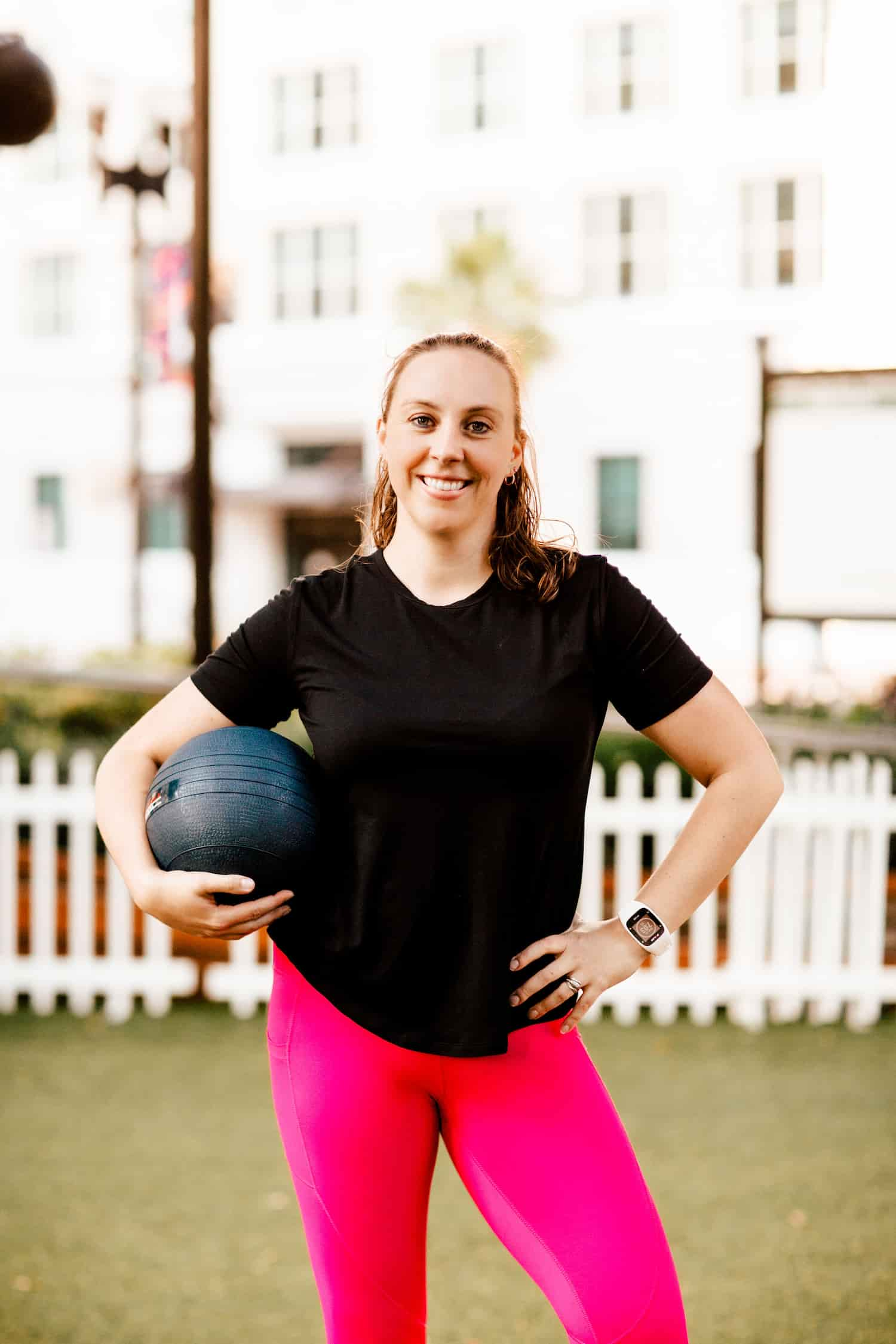 Looking for a postpartum mama who had a high standard of fitness to get back to? Jen is your lady!
Looking for a postpartum mama who had a high standard of fitness to get back to? Jen is your lady!My trainer Jen has also healed her diastasis recti that was a result of her second pregnancy. Jen loves to lift weights now and is a marathon runner. You can read more about Jen and her services here.
Check out this Diastasis Recti-Safe Core Workout from Jen
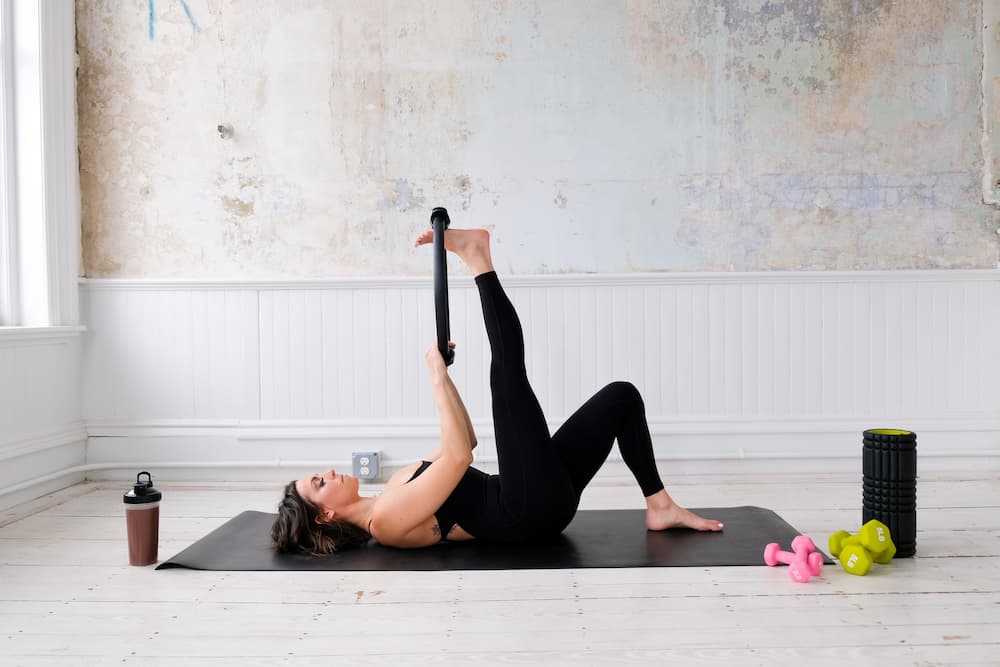 Ali uses her training in pilates combined with her pregnancy and postpartum exercise certification to help you heal diastasis recti via exercise and lifestyle modifications.
Ali uses her training in pilates combined with her pregnancy and postpartum exercise certification to help you heal diastasis recti via exercise and lifestyle modifications.My trainer Ali developed a passion for pregnancy and postpartum fitness after becoming a mom. You can read more about Ali and her services here.
You can fill out the form below for a Price Quote, or you can schedule a Free 15 Minute Discovery Call on Our Calendar if you'd like to chat first. You will be able to choose between an audio call and a Zoom. I offer full sessions via Zoom or in person depending on your location.
Whatever you do, do NOT settle for the notion that having a diastasis means you will never again do the activities you love or wear the clothes you want to wear. We've never met a person we couldn't help learn how to correct diastasis recti.
1 A T M van de Water 1, D R Benjamin 2. Measurement methods to assess diastasis of the rectus abdominis muscle (DRAM): A systematic review of their measurement properties and meta-analytic reliability generalisation. 2016 Feb;21:41-53. DOI: 10.1016/j.math.2015.09.013
2 Patrícia Gonçalves Fernandes da Mota, Augusto Gil Brites Andrade Pascoal et. al. Prevalence and risk factors of diastasis recti abdominis from late pregnancy to 6 months postpartum, and relationship with lumbo-pelvic pain. Observational Study Man Ther. 2015 Feb;20(1):200-5. doi: 10.1016/j.math.2014.09.002.
- Home
- Our Programs
- Pregnancy and Postpartum
- How to Correct Diastasis Recti




